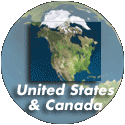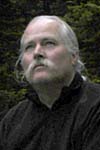
Joshua Tree Forest
Lee Flat, Death Valley National Park, California, USA
11 March, 2013 1 pm
© 2013 G. Donald Bain, All Rights Reserved.
The Joshua tree can be truly tree-like with broad spreading branches, but it is not genetically programmed for this architecture - each bifurcation is the result of an injury to a terminal flower bud. Being monocots, they do not lay down annual rings, so dating of old specimens is not accurate. Reproduction requires assistance from the yucca moth, which deposits pollen as it lays its eggs in the flower bud.
This is the indicator species for the Mojave Desert - if you see Joshua trees you are in the Mojave. Its range is thus mostly in California and southern Nevada, with a strip in western Arizona and one small area in the southwestern corner of Utah.
Joshua Tree National Park, east of Palm Springs, was created to celebrate and to protect the fine woodlands there. The largest "forest" of Joshua trees is at Cima Dome in Mojave National Preserve near Baker.


 Tap or click the zoom icon in the bottom right corner of the picture to switch between in-page and fullscreen view
Tap or click the zoom icon in the bottom right corner of the picture to switch between in-page and fullscreen view